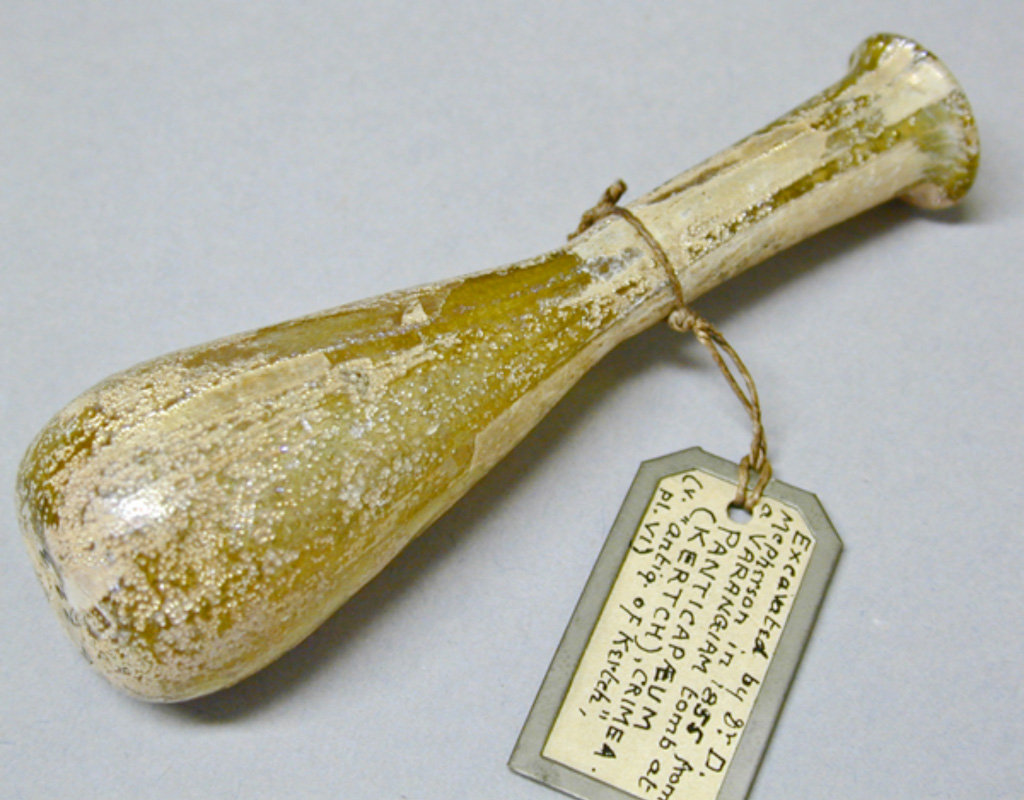Lacrymatory
Roman, Ukraine
 Collected by Duncan McPherson in 1855. Donated by Mrs W. D. Sturrock in 1923; 1923.22.3Roman and Greek society was fastidious about personal hygiene and appearance. The Romans scented their homes, food and even domestic animals. They not only anointed themselves with scent but also used underarm deodorants and breath-freshener tablets. Burning incense, long used by the Orthodox and Catholic Christian churches as an offering and aid to prayer, was originally banned by early Church Fathers because of its association with Roman paganism.
Collected by Duncan McPherson in 1855. Donated by Mrs W. D. Sturrock in 1923; 1923.22.3Roman and Greek society was fastidious about personal hygiene and appearance. The Romans scented their homes, food and even domestic animals. They not only anointed themselves with scent but also used underarm deodorants and breath-freshener tablets. Burning incense, long used by the Orthodox and Catholic Christian churches as an offering and aid to prayer, was originally banned by early Church Fathers because of its association with Roman paganism.
Oils and other unguents were important for preparing the bodies of burial or cremation. After use, the containers were often deposited beside the body in their grave. Early scholars mistakenly thought that these vessels held the tears of the bereaved (tears are secreted from the lacrymatory glands).
Early lacrymatory bottles were often made of terracotta. However, with the advent of glassblowing in Syria around 50 BC, small glass bottles could be made relatively easily and became affordable to people of modest means across the Empire from Israel to Britain. This bottle was found in a tomb in the city of Panticapeum, now Kerch in the Ukraine. Its yellow colour results from the original addition of manganese to decolourize the glass by oxidising the iron content. Over the years this produces a greater concentration of yellow iron (III) oxide.
